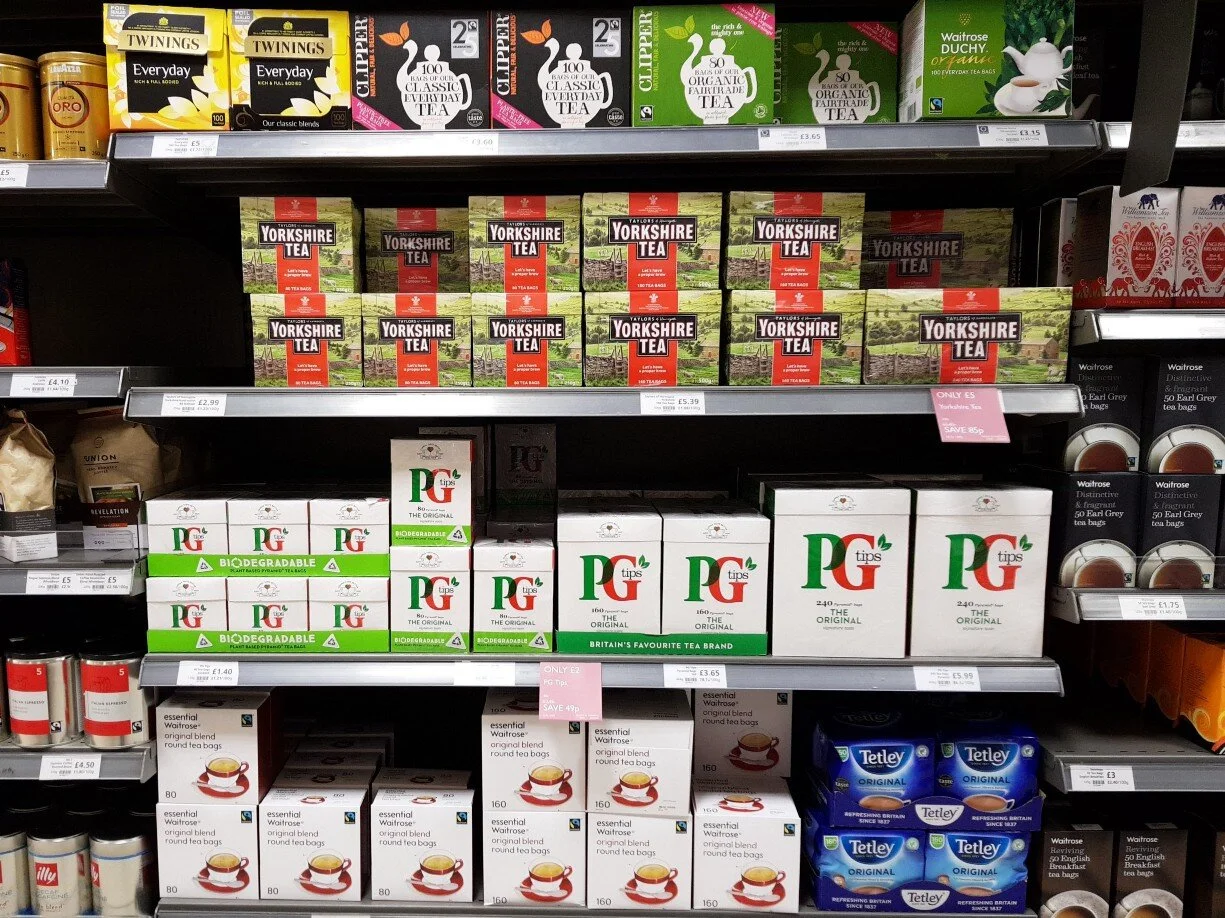Wardley Maps 2 — Unique selling points
This is the teabag section at my local supermarket.
Imagine running strategy for one of those companies. What is unique about your product? Why would anyone pick your product from the self?
Wardley Maps have changed the way I think about product differentiation. Or more precisely — they are a great way to think about it.
Mapping the USPs of tea companies
By definition, USPs should be unique.
It follows that the unique value of any product or service should appear in the ‘Genesis’ / ‘Custom built’ side of a Wardley Map.
Seeing things this way helps us explore and then leverage the interplay between product, capabilities, brand, and pricing.
To go back to the teabag example, we can see a range of strategies at play.
Indeed, we can find examples of tea companies that position and brand themselves in a way that we can fit to the stages of evolution that appear horizontally across Wardley Maps.
Genesis teabags — ‘hand-crafted’ tea bags like Rare Tea Co
Custom teabags — local, artisan teabags like Teapigs, Yorkshire Tea
Product teabags — mainstream brands like PG Tips, Tetley etc.
Commodity teabags — supermarket own brand
Let’s map each type.
Rare Tea Company — Sri Lankan Hand Rolled Black Tea
This is one of our most rare and precious teas; a unique hand rolled black tea from the Amba Gardens, Sri Lanka. [link]
Let’s start at the posh end. In many ways this is the easiest map — because the product itself is somewhere between genesis and custom. It is rare. The USP is the unique product itself.
Yorkshire Tea- Proper Brew
A proper brew — pure and simple. We pay fair prices for really good tea from farms in Africa and India, to make a lovely blend that’s big on flavour, seriously refreshing and kind to the people who grow it.[link]
OK! They are still leading with provenance, but with a very different tone. How might we map this, and the type of need it meets?
This tea feels much closer to a generic ‘product’, with lots of the effort going into the branding of the company and people behind it (just look at the name).
PG Tips — The Original
A delicious smooth cuppa. No wonder we’re the nation’s favourite. [link]
Familiar, ubiquitous, consistent, fairly priced… this kind of map is probably common across all sorts of markets. And as the product edges towards a commodity, we see how the USP gets further removed from the actual item itself. In fact, you could argue that most people buying PG Tips are simply buying PG Tips.
Here, the unique selling points are all about the brand.
Sainsbury’s Basics Tea Bags
Mixed leaves, great for everyday brews. [link]
And here’s a commodity. The leaves don’t matter, the brand doesn’t matter, the packaging doesn’t matter. This tea bags ticks the essential boxes (including being Fair Trade).
So what is the USP? What need does this meet?
Conclusion
Wardley Maps help us visualise how the product-market relationship changes profoundly over time.
Many products begin with a genuinely unique capability. But as those technologies & ideas become commodities, these companies have to evolve their market positioning, often shifting the focus to brand and trust.
Innovative startup are often outmanoeuvred by established companies who are able to use their brand and reach to take a maturing technology to scale
At the same time — brand, trust, and reputation don’t ‘inevitably move right’ on the map in the same way that technologies do.
In a world where ‘the latest tech’ gets so much attention, this reminds us that those old fashioned aspects of business & product strategy are still absolutely essential.





